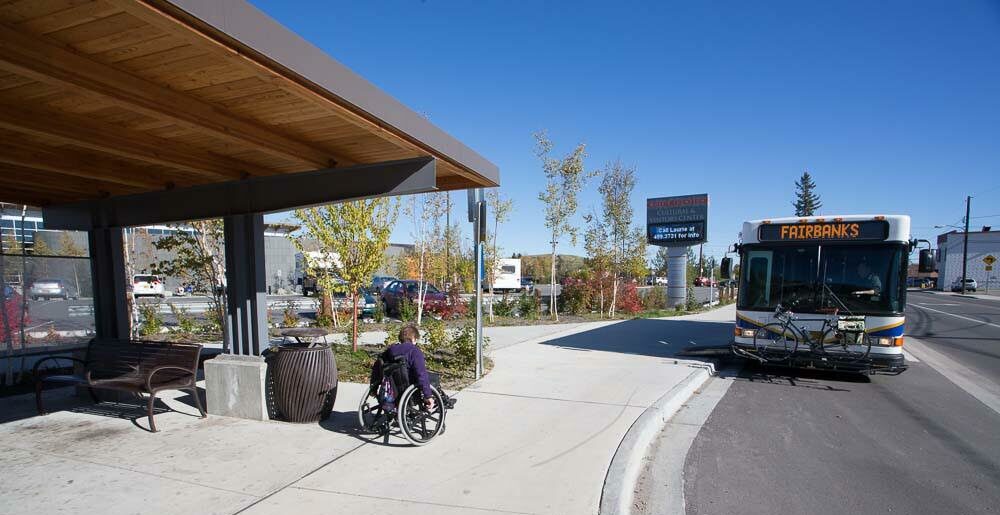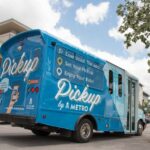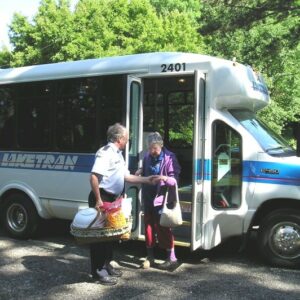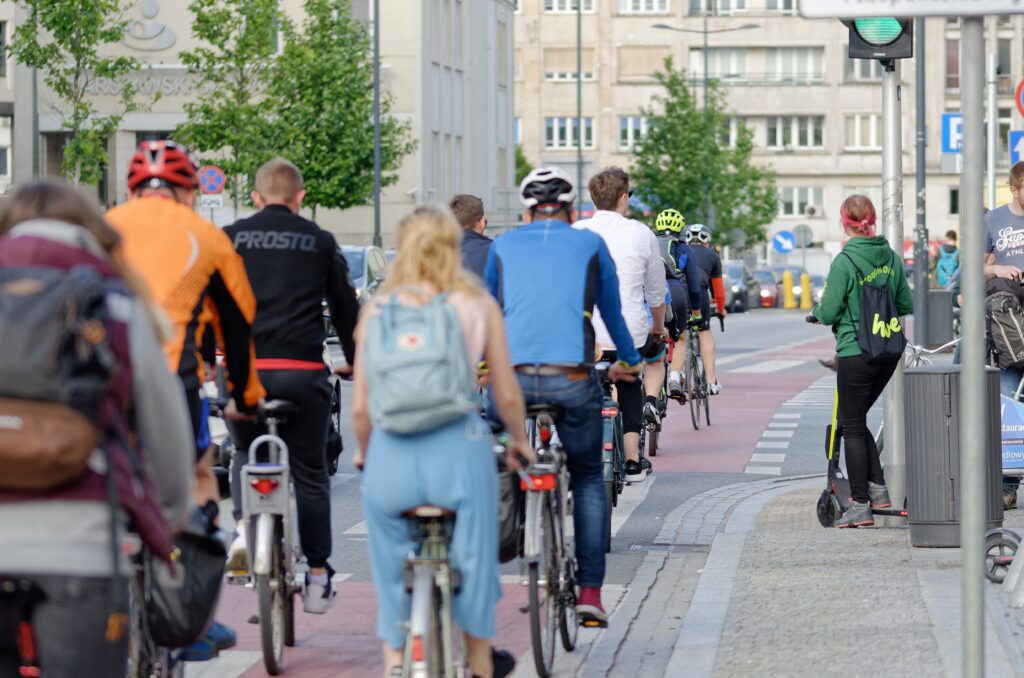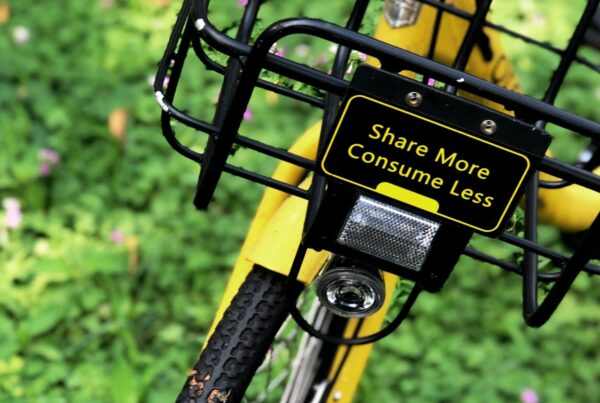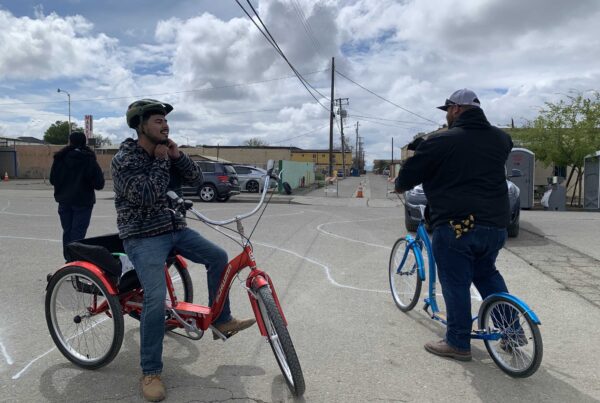Shared-Use Mobility Center Founder and Executive Director Sharon Feigon shares her thoughts on the top issues facing cities, companies, and communities today.
- LONG-OVERDUE BUS IMPROVEMENT
Buses are having their moment as cities and agencies rise to answer the question, “How do we make buses work?” Innovations are ensuring fair pricing with fare capping, reduced emissions via electrification, and route redos for efficiency and coverage. Buses are turning into super-fast people-delivery machines with Bus Rapid Transit.
2. ON-DEMAND AND AV SHUTTLE PILOTS
When it takes a trip to take a trip, on-demand shuttle and autonomous vehicles give riders small-scale mobility options with fixed or flexible routes and schedules. Agencies and companies are taking note. In cities and suburbs, mobility services are replacing fixed-routes or filling first/last-mile gaps, and we’re learning every step of the way.
3. VERTICAL INTEGRATION OF BUSINESSES AND MODES
Uber owns JUMP e-bikes and Scoot scooters. In 2018, Lyft purchased Motivate and became America’s largest bikeshare service. Last year, Lyft added a ‘Transit’ feature in the app for select cities. Companies like these are integrating business and modes, which raises the question of who owns the platform and if this ownership can serve the public interest.
4. PUBLIC TRANSIT AND SOCIAL SERVICE TRANSPORTATION
Social Service transportation providers may own many vehicles, but only a limited population can use the service, even if it’s the only provider in the neighborhood. By connecting the social service and transit platforms, we can expand the number of people serviced and provide better mobility options. In 2020, it’s expected that more projects will attempt to make this solution work.
5. EQUITY DRIVEN BY NEED
Equity is a great buzzword, but for successful implementation best practices are needed—and we’re starting to see them, particularly with needs assessment and community engagement. Finally, we are designing services around the people who will use them and finding appropriate options such as payment without a credit card or smartphone for the unbanked.
6. DATA: TO SHARE OR NOT TO SHARE?
Advanced technologies are fueling the growth of app-enabled shared mobility services and service providers. For the individual, this means personal data (usage habits, financial information, preferences) is being collected with every search and swipe. This year will see more investigation into who has access to this information, who is using it, and why.
7. STREET-LEVEL THINKING
The focus today is on street management: the balance of curb and street space, designated lanes and land use. We need to integrate modes while planning for efficiency and public interest. In New York City and San Francisco, this has resulted in closing some streets to cars. In all places, it should mean ensuring safety and making people, not cars, the most important factor.
8. FREE TRANSIT AND OTHER PRICING MODELS
Radical to some, but long-needed to others, Kansas City became the first major US city to adopt fare-free transit. Other new pricing models include fare capping, which prevents riders from paying more than the cost of a monthly pass, congestion pricing to subsidize fares, and treating transit as a service whose cost is recouped by the economic benefits of universal mobility.
9. WHAT’S THE NEXT SCOOTER ON THE BLOCK?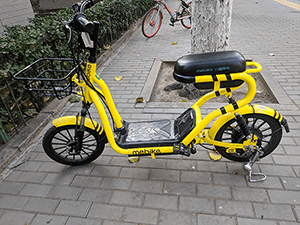
E-bikes are the fastest-growing segment in the cycling market, and are poised to be the “next big thing.” They’ll fight for lane space with E-skateboards from companies such as Blitzart, Meepo, Onewheel and others, sit-down scooters that widen the mode’s user base without widening the scooters, and “look up,” we can’t forget air deliveries starting to fly overhead.
10. SOMETIMES IT TAKES POLICY…
Finally, there is an increased focus on enacting policy and regulations to ensure the “mobility for all” aspect of shared mobility services. Action is needed at the local, regional, state, and federal level that truly addresses the needs of everyone in the mobility landscape, including people, businesses, cities, and markets. This is possible, we just have to do it.
11. RETHINKING GOODS DELIVERY
In today’s on-demand world, we’ll focus more on how billions of dollars of goods get from A to B. We’ll rethink environmental impact from emissions to packaging, and test more electric and autonomous freight transport. As the number of freight tons on the nation’s highways is expected to rise through 2040, we’ll see more electric and automated vehicles pulling the load.
12. ELECTRIC VEHICLES ARE NOT ENOUGH
Transportation is now the largest source of CO2 emissions in the US. Electrifying cars, buses, and trucks is part of the solution but it’s not enough. We need to reduce the demand for driving by increasing transit, shared mobility, and active transportation. Having more people in a vehicle cuts emissions. Active transportation–biking and walking has zero emissions. We need to scale up this mode shift quickly to contain the worst impacts of climate change.

